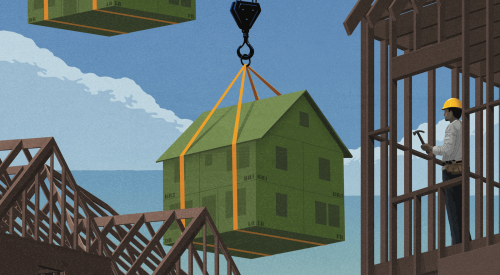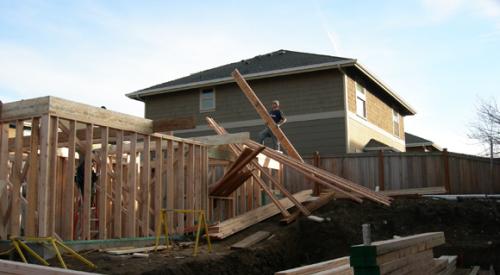| Rob Fanjoy
|
A recent survey of the timber frame industry reveals that it is old-fashioned relationship building that is helping the industry grow, not demographic research or high-tech marketing. Generally, timber frame companies rely on word-of-mouth, customer referrals and print advertising to draw new customers, and the new customers are certainly coming.
According to the 2000 Timber Frame Industry Sales & Marketing Survey, the average home sales per company was 16.32 in the year 1999, up from 14.08 the previous year.
"The reasons for this growth are basically two-fold," says Jerry Rouleau of J. Rouleau & Associates, a sales and marketing consulting firm from Hanover, N.H. "There is a real high consumer interest in the style and appeal of timber frame homes. And the fact that many timber frame companies have invested in new machines, enabling them to produce these homes more quickly, has also added to their sales success."
This type of increase is expected to continue despite the fact that 57% of the respondents said they had two or fewer sales people. Furthermore, 70% indicated that their company does not have a public relations program in place and approximately 60% said no marketing department existed within their company. Nevertheless, the sales goal for survey participants is equal to 21.93 home sales for the year 2000.
"Sales are generally done through multi-function people within these companies," says Rouleau, who stresses that publicity from area and national magazines is bringing a lot of business to timber framer''''s doors. "A number of custom builders across the nation are using timber framing in their high-end homes because of the dramatic appearance."
According to respondents, word-of-mouth, magazine advertisements, referrals, previous customers and web sites, in that order, are what bring customers to them. Nearly all participating companies eschew a formal lead management system.
"The larger timber frame companies do have an aggressive marketing department and a number of others are going in that direction. Some of the web pages of those larger companies are great," says Rouleau. "Some of the responding companies could not handle more sales if they had a marketing department, since they are so backlogged already."
According to the survey, the typical timber frame home buyer is a professional over age 35, primarily upper middle class and looking for either a retirement dream home or an upscale second home. Indeed, the survey data indicates that nearly 95% of timber frame projects are custom plans. The average reported frame package sale price was $74,840, while the average reported total project cost was $207,030.
Over 60 companies from the U.S. and Canada responded to the survey, which was prepared by J. Rouleau & Associates and sponsored by the Timber Frame Business Council. The survey also delves into corporate pay scales, computer usage, types of materials used in homes and many other subjects. Copies are available through the Timber Frame Business Council for $50 each. For more information, call the council at 603-643-5033 or visit www.timberframe.org.












